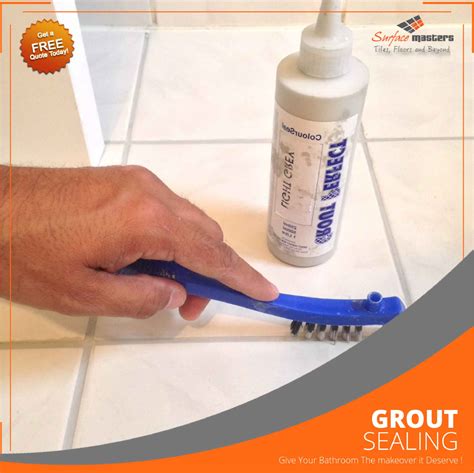Grout Sealer Drying: The Science Behind It
Grout, that ubiquitous material filling the spaces between your tiles, is porous. This porosity makes it susceptible to staining, mildew growth, and general deterioration. Grout sealer is the solution, creating a protective barrier that safeguards your investment. But how does grout sealer actually dry, and what factors influence the process? Understanding the science behind grout sealer drying will help you achieve optimal results and extend the lifespan of your tiled surfaces.
What is Grout Sealer, and How Does it Work?
Grout sealers are typically solvent-based or water-based polymers that penetrate the grout's pores. These polymers form a film that seals the surface, preventing moisture and contaminants from entering. The specific type of polymer, its concentration, and the application method significantly impact the drying time and the overall effectiveness of the sealant. Solvent-based sealers often dry faster due to the solvent's volatility, but they can release strong fumes. Water-based sealers are generally considered more environmentally friendly and have milder odors.
How Long Does Grout Sealer Take to Dry?
The drying time for grout sealer depends on several factors:
- Type of sealer: Solvent-based sealers generally dry faster than water-based sealers, often within a few hours. Water-based sealers might need 24 hours or more for complete drying.
- Porosity of the grout: Highly porous grout will absorb more sealer, leading to longer drying times. Dense grout will dry faster.
- Temperature and humidity: Warmer temperatures and lower humidity accelerate drying. Cold, damp conditions will significantly prolong the drying process.
- Thickness of the application: A thicker application will naturally take longer to dry than a thinner, more even coat.
- Ventilation: Good ventilation helps speed up the evaporation of solvents or water from the sealer.
Generally, expect a drying time ranging from a few hours to 24-48 hours, depending on the factors listed above. Always consult the manufacturer's instructions on the specific product you're using for the most accurate drying time estimates.
What Happens During the Grout Sealer Drying Process?
The drying process involves the evaporation of the carrier liquid (solvent or water) in the sealer, leaving behind the polymer film. This is a physical process, not a chemical reaction. The polymer molecules interlink and form a continuous barrier within the grout pores. The rate of evaporation is directly affected by the environmental conditions mentioned earlier – temperature, humidity, and ventilation.
What Happens if Grout Sealer Doesn't Dry Properly?
Incomplete drying can result in several issues:
- Tackiness: The sealer remains sticky, making the surface unpleasant to touch and vulnerable to dirt and debris.
- Reduced protection: The incomplete film doesn't provide the expected protection against staining and water damage.
- Streaking and uneven appearance: Pooling or uneven application can lead to an unsightly finish.
How to Speed Up Grout Sealer Drying Time?
While you can't control the properties of the grout or the sealer itself, you can influence the drying time by:
- Improving ventilation: Open windows and doors to create airflow. Using fans can further accelerate the process.
- Increasing temperature: If possible, slightly increase the room temperature. Avoid using excessive heat as this could damage the sealer or the tiles.
- Ensuring proper application: Apply a thin, even coat according to the manufacturer’s instructions. Avoid over-application.
Is it Safe to Walk on Grout After Applying Sealer?
This depends entirely on the product and the drying time specified by the manufacturer. Most sealers recommend avoiding foot traffic for at least 24 hours to allow for complete curing and prevent smearing or marring the newly sealed surface. Always refer to the product's instructions for specific recommendations regarding foot traffic.
How Can I Tell if My Grout Sealer is Completely Dry?
The sealer should feel completely dry to the touch and not sticky. It should also have a uniform appearance, free of streaks or pooling. If you're unsure, it's best to err on the side of caution and wait the full recommended drying time before resuming normal use of the area.
By understanding the science behind grout sealer drying and following best practices, you can ensure optimal results, protect your investment, and enjoy the beauty of your tiled surfaces for years to come. Remember to always read and follow the manufacturer's instructions for the specific product you are using.

